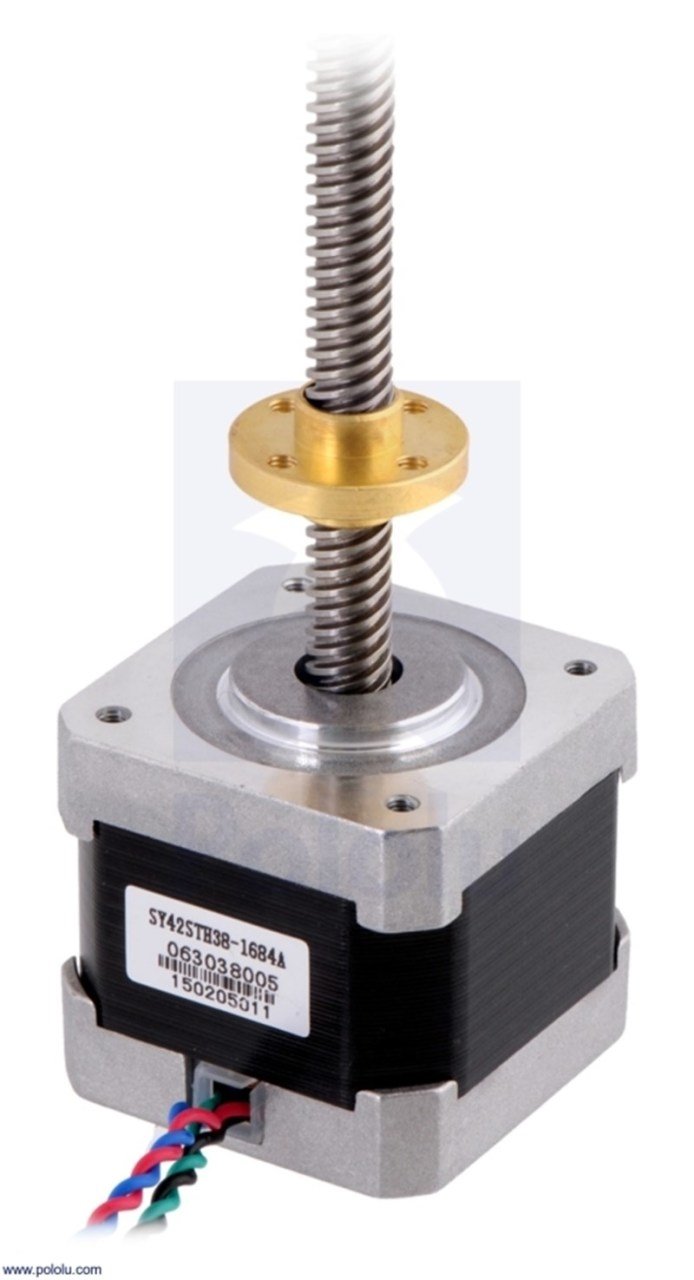Stepper Motor with 28cm Lead Screw: Bipolar, 200 Steps
The included copper alloy Travelling nut (also known as a carriage nut) features a mounting flange with four holes threaded for M3 Screws . The nut moves 8.0 mm per full revolution of the lead screw, which allows for a linear resolution of 0.040 mm per full step of the stepper motor. Even smaller step sizes can be achieved through microstepping, which is a feature of many Bipolar stepper motor drivers . We recommend the Drv8825 stepper Motor Driver or L298n Stepper Motor Driverfor use with this stepper motor, which allow for a linear resolution of 1.25 µm per 1/32 microstep. However, please note that the nut is not spring loaded, so changes in direction will result in loss of positioning precision due to backlash. Extra traveling are also available for purchase separately.
The maximum achievable linear speed depends a lot on the details of the system, including the load and motor supply voltage. Under ideal conditions (e.g. with gradual ramping up of the step rate, a high supply voltage, and no load), we were able to achieve speeds close to 30 cm/s (12 in/s) with the 28 cm lead screw version.
The stepper motor has a 1.8° step angle (200 steps/revolution) and each phase draws 1.7 A at 2.8 V, allowing for a holding torque of 3.7 kg-cm (51 oz-in). The motor has four color-coded wires terminated with a JST XHP-4 connector with 0.1" spacing: black and green connect to one coil; red and blue connect to the other. It can be controlled by a pair of suitable H-bridges (one for each coil).

Socket of Stepper Motor JST Xhp-4
Stepper Motor Wiring Diagram

Specifications
- Size: 42.3 mm square × 38 mm, not including the shaft (NEMA 17)
- Leadscrew: Tr 8 × 8(P2)
- Steps per revolution: 200
- Linear step size: 40 µm (1.6 mil) per full step
- Current rating: 1.68 A per coil
- Voltage rating: 2.8 V
- Resistance: 1.65 Ω per coil
- Holding torque: 3.7 kg-cm (51 oz-in)
- Inductance: 3.2 mH per coil
- Output shaft supported by two ball bearings





